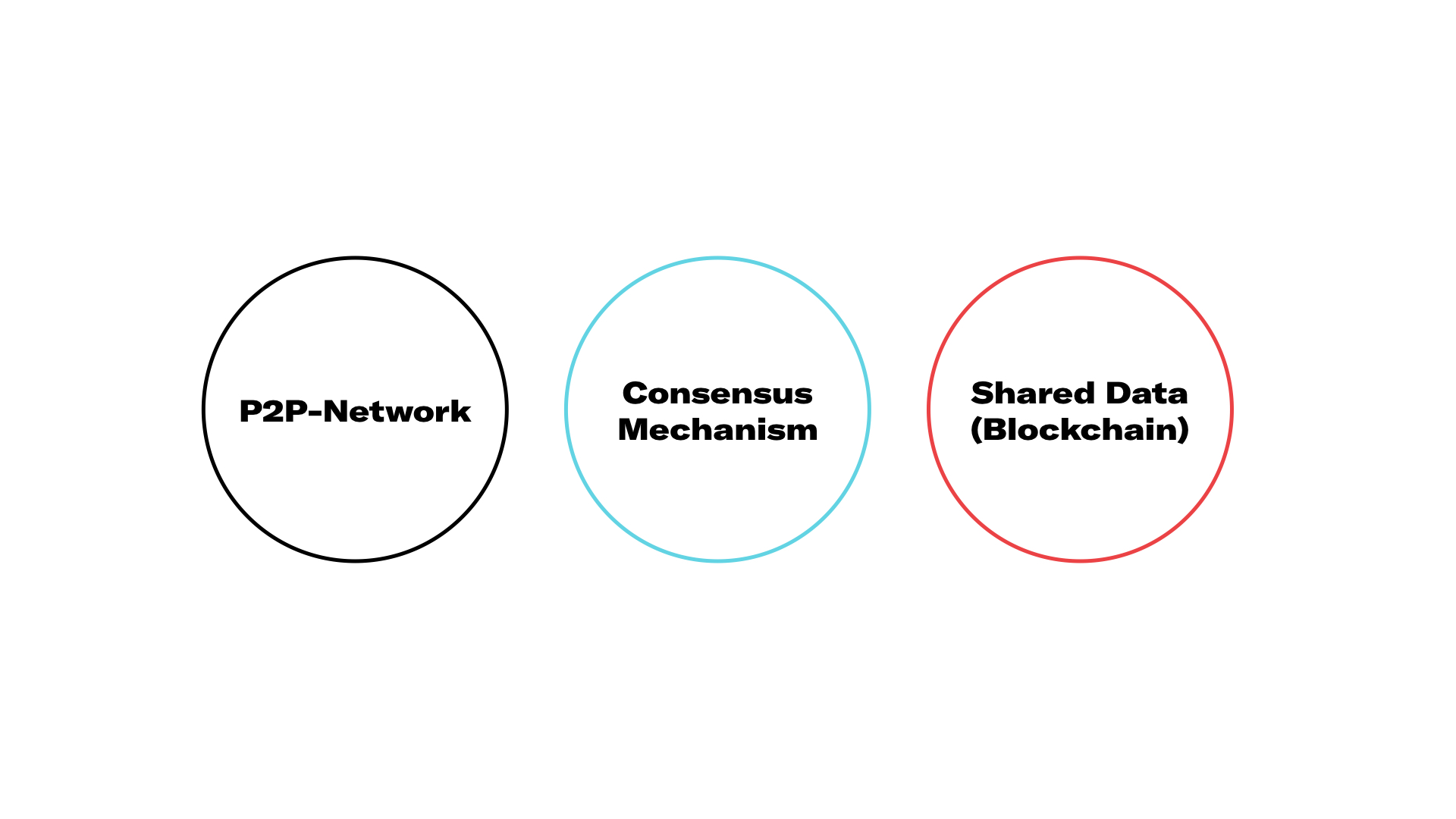Author: Mario Martin
Blockchain: Unforgeable, decentralized and democraticBlockchain is one of the hottest topics around and many companies try to jump on the bandwagon. They are eager to find out how to use this exciting technology for their own purposes.
A fraud resistant, untemperable chain of data
The term "blockchain" describes a decentralized record keeping concept in which chunks of records are continuously linked through cryptographic methods. The records’ actual content is irrelevant - what matters: the chain established between its chunks - the “blocks” - ensures at any time that content and ordering of records is correct. Even the slightest manipulation would damage the integrity of the complete system.
A revolution of trust
A blockchain consists of a combination of three elements that constitute the untamperable data chain: computers in a P2P network forge a machine consensus about shared data sets. Since data records within the blockchain are unchangeable, consistent and trustworthy, the technology allows anonymous players to synchronously keep record of which information is true. That means you can trust each and every network participant straight away.

- **P2P network:** Instead of having a central entity as a trusted “man in the middle”, all participants interact directly. That avoids having a single entity whose failure could cause a failure of the complete system. - **Consensus mechanism:** The network defines rules that determine how the participating computers agree on an identical version of the blockchain. Using these rules participants consent on what they consider as the “truth”. The safest, yet computationally rather intensive, mechanism to reach consensus is called “Proof of Work”.
- Shared databases: Validated, synchronized data transactions form the actual blockchain. The format allows computers to validate data authenticity over a long period of time. Encryption ensures that only blocks of data which have already been verified by other computers are added to the chain. Newer blocks always reference earlier ones so that a bidirectional chain of data blocks is built. Every computer in the network constantly updates its copy of the complete data set – the blockchain – thereby making it resistant against manipulation of “evil” network nodes that could try to inject their own forged version of truth.
The Proof of Work consensus mechanism
Proof of Work is describing the mechanism behind the computing effort that has to be taken in order to have transactions validated and added to the blockchain. It could be described as a “hash puzzle” which involves a brute force search for a value leading to a certain hash value that has been constructed over a block that a consensus has to be achieved on. Solving this puzzle often is referred to as “mining”: Whoever solves it first may add the next block of validated transactions to the blockchain and receives a reward for doing so. After the puzzle was solved the solution is broadcasted to all other participants who then can immediately check and confirm its correctness. Due to this network effect all attempts to tamper a block with different content in the same place will remain ineffective.
Blockchain in practice
Blockchain technology is often used in a monetary context: most of the large public blockchain applications are cryptocurrencies. The most prominent of them is Bitcoin. Banks, financial service providers and brokers have been digitalization pioneers thanks to structural advantages that facilitate blockchain implementation. Apart from cryptocurrencies, the blockchain is used in much broader application fields such as the transfer of ownership, financial asset management, payment transactions and transaction clearings. According to a survey conducted by the World Economic Forum, by 2027 an estimated 10 per cent of the global GDP could be regulated by using blockchain technology.
Blockchain technology is also on the rise in identity management and logistics. In identity management, it is used to digitally watermark transactions to allow a real-time identity verification. The projects Bitnation and e-Residency are two interesting examples for this.In logistics, blockchains allow tracing back a product’s origin and authenticity. For example with the free blockchain implementation Hyperledger Sawtooth the supply chain of wet fish can be tracked. The Startup Everledger uses a hybrid of public and private blockchains to issue certificates for diamonds.
Checklist for a blockchain application
- Access control: Which players can modify the blockchain?
- Performance: high data throughput
- Speed: transactions have to be confirmed within a short period of time
- Scalability: the network can grow without constraints on performance and speed
- Privacy: data must be stored in a safe location
- Compliance: laws must be enforceable and members can be identified
- Security: intervention options in case of an attack on the network
Blockchain at Turbine Kreuzberg
We believe this technology offers a great potential for many fields. However: its strengths do not pay off for all companies, in fact they might even stand against their interests. This is because e.g. financial transactions are nothing you want to share with the public. Plus, only few companies want to give up control over verification processes.
In many cases, it is merely the hype around the technology and the resulting marketing effect that’s behind the idea to use blockchain in order to earn money. Market mechanisms will help push forward the useful applications and eliminate those what are less beneficial. Just like in the early days of the internet, the real disruptiveness of the blockchain technology is hidden in its liberal qualities:
- Neutrality
- Autonomy
- Openness
- Boundlessness
- Resistance to censorship
We are interested in blockchain applications that benefit big parts of the population instead of merely serving corporate interests. We are convinced that only a free internet can serve humanity.

